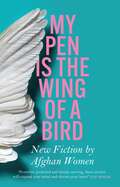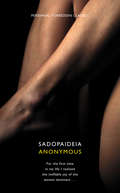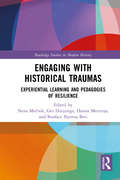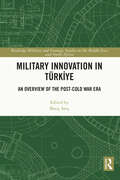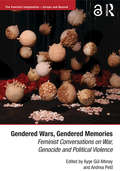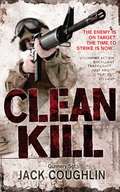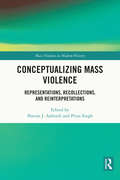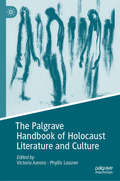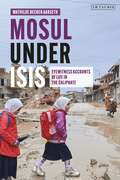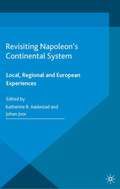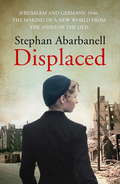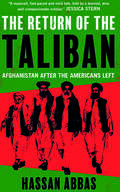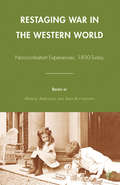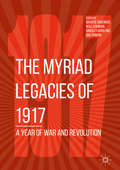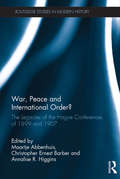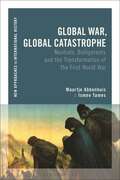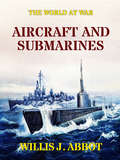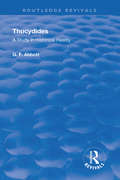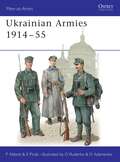- Table View
- List View
My Pen is the Wing of a Bird: New Fiction by Afghan Women
by"Powerful, profound and deeply moving, new fiction by Afghan women writers will expand your mind and elevate your heart" ELIF SHAFAK"Written in simple, direct prose and offers vivid snapshots of a country beset by war and violence . . . It seems more important than ever to read the work of these courageous writers" Financial Times"My pen is the wing of a bird; it will tell you those thoughts we are not allowed to think, those dreams we are not allowed to dream"A woman's fortitude saves her village from disaster. A teenager explores their identity in a moment of quiet. A petition writer reflects on his life as a dog lies nursing her puppies. A tormented girl tries to find love through a horrific act. A headmaster makes his way to work, treading the fine line between life and death."A precious collection of work, the first and maybe the last of its kind. My Pen Is the Wing of a Bird is a huge accomplishment" MONIQUE ROFFEY, author of The Mermaid of Black ConchMy Pen Is the Wing of a Bird is a landmark collection: the first anthology of short fiction by Afghan women. Eighteen writers tell stories that are both unique and universal - stories of family, work, childhood, friendship, war, gender identity and cultural traditions."This book reminds us that everyone has a story. Stories matter; so too the storytellers. Afghan women writers, informed and inspired by their own personal experiences, are best placed to bring us these powerful insights into the lives of Afghans and, most of all, the lives of women. Women's lives, in their own words - they matter." Lyse Doucet in her IntroductionThis collection introduces extraordinary voices from the country's two main linguistic groups (Pashto and Dari) with original, vital and unexpected stories to tell, developed over two years through UNTOLD's Write Afghanistan project. My Pen Is the Wing of a Bird comes at a pivotal moment in Afghanistan's history, when these voices must be heard.With an Introduction by BBC Chief International Correspondent Lyse Doucet and an Afterword by Lucy HannahABOUT UNTOLD UNTOLD is a writer development programme for marginalised writers in areas of conflict and post-conflict. Afghanistan has millions of Pashto and Dari speakers with little or no local support for creative writing, literary translation, or literary editing. Support for writers has been hampered by cultural norms, free expression issues, chronic instability, and internal displacement. UNTOLD has been working one-to-one with women on their short stories, with English-speaking literary editors and translators working with the writers to realise the potential of their stories for publication both locally and globally in translation.
Sadopaideia (Harper Perennial Forbidden Classics)
by‘Sadopaideia’ is a shocking, explicit, classic tale of Sado Masochism at the heart of English high society. Set in London and the Dorset coast, in an era of English history where corporal punishment was freely dispensed, the characters represent the core principles of disobedience, chastisement and compliance.
Engaging with Historical Traumas: Experiential Learning and Pedagogies of Resilience (Routledge Studies in Modern History)
by Nena Mo 269 Nik Ger Duijzings Hanna Meretoja Bonface Njeresa BetiThis book provides case-studies of how teachers and practitioners have attempted to develop more effective ‘experiential learning’ strategies in order to better equip students for their voluntary engagements in communities, working for sustainable peace and a tolerant society free of discrimination. All chapters revolve around this central theme, testing and trying various paradigms and experimenting with different practices, in a wide range of geographical and historical arenas. They demonstrate the innovative potentials of connecting know-how from different disciplines and combining experiences from various practitioners in this field of shaping historical memory, including non-formal and formal sectors of education, non-governmental workers, professionals from memorial sites and museums, local and global activists, artists, and engaged individuals. In so doing, they address the topic of collective historical traumas in ways that go beyond conventional classroom methods. Interdisciplinary in approach, the book provides a combination of theoretical reflections and concrete pedagogical suggestions that will appeal to educators working across history, sociology, political science, peace education and civil awareness education, as well as memory activists and remembrance practitioners.
Military Innovation in Türkiye: An Overview of the Post-Cold War Era (Routledge Military and Strategic Studies on the Middle East and North Africa)
by Bar 305 351 Ate 351This book explores Turkish military innovation since the Cold War. The major questions addressed are how Türkiye has been able to innovate, the production of new weapon systems, its philosophical background, how the country overcame bureaucratic and economic obstacles, and how these innovations resonated in military doctrine and organization. Focusing on two main defense industry projects that trigger an overall change in the military doctrine and organization, the text examines the innovative inclinations of the Turkish military realm and reveals the societal, economic and political consequences of military innovation. This book fills a gap in the literature by providing an interdisciplinary and comprehensive overview of Turkish military innovation. Contributors include those involved in and affected by the military innovation process, as well as scholars who monitor the process using primary sources. Military Innovation in Türkiye will appeal to academics, politicians and military professionals interested in understanding the evolution of the Turkish military.
Gendered Wars, Gendered Memories: Feminist Conversations on War, Genocide and Political Violence (The Feminist Imagination - Europe and Beyond)
by Ay 351 e Gül Altı Nay Andrea Pet 337The Introduction of this book is freely available as a downloadable Open Access PDF under a Creative Commons Attribution-Non Commercial-No Derivatives 4.0 license available at http://www.taylorfrancis.com/books/e/9781315584225 The twentieth century has been a century of wars, genocides and violent political conflict; a century of militarization and massive destruction. It has simultaneously been a century of feminist creativity and struggle worldwide, witnessing fundamental changes in the conceptions and everyday practices of gender and sexuality. What are some of the connections between these two seemingly disparate characteristics of the past century? And how do collective memories figure into these connections? Exploring the ways in which wars and their memories are gendered, this book contributes to the feminist search for new words and new methods in understanding the intricacies of war and memory. From the Italian and Spanish Civil Wars to military regimes in Turkey and Greece, from the Armenian genocide and the Holocaust to the wars in Abhazia, East Asia, Iraq, Afghanistan, former Yugoslavia, Israel and Palestine, the chapters in this book address a rare selection of contexts and geographies from a wide range of disciplinary perspectives. In recent years, feminist scholarship has fundamentally changed the ways in which pasts, particularly violent pasts, have been conceptualized and narrated. Discussing the participation of women in war, sexual violence in times of conflict, the use of visual and dramatic representations in memory research, and the creative challenges to research and writing posed by feminist scholarship, Gendered Wars, Gendered Memories will appeal to scholars working at the intersection of military/war, memory, and gender studies, seeking to chart this emerging territory with ’feminist curiosity’.
Clean Kill (Gunnery Sergeant Kyle Swanson series #3)
by Donald A. Davis Jack CoughlinAt a 15th Century castle outside of Edinburgh, Sir Geoffrey Cornwell, overseer of Task Force Trident and a former colonel, is in the process of brokering an unprecedented agreement. Prince Abdullah of Saudi Arabia and the Israeli Foreign Minister are scheduled to sign an historic peace treaty - that is, until their meeting is violently interrupted by a missile strike that leaves the Foreign Minister of Israel dead and the Prince injured.Gunnery Sergeant Kyle Swanson is immediately called to the UK, where he thwarts another attempt on the prince of Saudi Arabia's life. The attackers are Middle Eastern, but they aren't working for Al Qaeda - they're employed by foreign operatives opposed to the peace agreement and determined to claim Saudi oil reserves for themselves. Meanwhile, Juba comes out of hiding. One of the best snipers in the world and Kyle's nemesis, Juba remains determined to exact revenge on the man who nearly took his life.With scenes of tremendous suspense that span the globe, Clean Kill pits our hero against a group whose greed and vengeance know no limits . . .
Conceptualizing Mass Violence: Representations, Recollections, and Reinterpretations (Mass Violence in Modern History)
by Navras J. Aafreedi Priya SinghConceptualizing Mass Violence draws attention to the conspicuous inability to inhibit mass violence in myriads forms and considers the plausible reasons for doing so. Focusing on a postcolonial perspective, the volume seeks to popularize and institutionalize the study of mass violence in South Asia. The essays explore and deliberate upon the varied aspects of mass violence, namely revisionism, reconstruction, atrocities, trauma, memorialization and literature, the need for Holocaust education, and the criticality of dialogue and reconciliation. The language, content, and characteristics of mass violence/genocide explicitly reinforce its aggressive, transmuting, and multifaceted character and the consequent necessity to understand the same in a nuanced manner. The book is an attempt to do so as it takes episodes of mass violence for case study from all inhabited continents, from the twentieth century to the present. The volume studies ‘consciously enforced mass violence’ through an interdisciplinary approach and suggests that dialogue aimed at reconciliation is perhaps the singular agency via which a solution could be achieved from mass violence in the global context. The volume is essential reading for postgraduate students and scholars from the interdisciplinary fields of Holocaust and Genocide Studies, History, Political Science, Sociology, World History, Human Rights, and Global Studies.
Conceptualizing Mass Violence: Representations, Recollections, and Reinterpretations (Mass Violence in Modern History)
by Navras J. Aafreedi Priya SinghConceptualizing Mass Violence draws attention to the conspicuous inability to inhibit mass violence in myriads forms and considers the plausible reasons for doing so. Focusing on a postcolonial perspective, the volume seeks to popularize and institutionalize the study of mass violence in South Asia. The essays explore and deliberate upon the varied aspects of mass violence, namely revisionism, reconstruction, atrocities, trauma, memorialization and literature, the need for Holocaust education, and the criticality of dialogue and reconciliation. The language, content, and characteristics of mass violence/genocide explicitly reinforce its aggressive, transmuting, and multifaceted character and the consequent necessity to understand the same in a nuanced manner. The book is an attempt to do so as it takes episodes of mass violence for case study from all inhabited continents, from the twentieth century to the present. The volume studies ‘consciously enforced mass violence’ through an interdisciplinary approach and suggests that dialogue aimed at reconciliation is perhaps the singular agency via which a solution could be achieved from mass violence in the global context. The volume is essential reading for postgraduate students and scholars from the interdisciplinary fields of Holocaust and Genocide Studies, History, Political Science, Sociology, World History, Human Rights, and Global Studies.
The Palgrave Handbook of Holocaust Literature and Culture
by Victoria Aarons Phyllis LassnerThe Palgrave Handbook of Holocaust Literature and Culture reflects current approaches to Holocaust literature that open up future thinking on Holocaust representation. The chapters consider diverse generational perspectives—survivor writing, second and third generation—and genres—memoirs, poetry, novels, graphic narratives, films, video-testimonies, and other forms of literary and cultural expression. In turn, these perspectives create interactions among generations, genres, temporalities, and cultural contexts. The volume also participates in the ongoing project of responding to and talking through moments of rupture and incompletion that represent an opportunity to contribute to the making of meaning through the continuation of narratives of the past. As such, the chapters in this volume pose options for reading Holocaust texts, offering openings for further discussion and exploration. The inquiring body of interpretive scholarship responding to the Shoah becomes itself a story, a narrative that materially extends our inquiry into that history.
Mosul under ISIS: Eyewitness Accounts of Life in the Caliphate
by Mathilde Becker AarsethThe Islamic State of Iraq and the Levant (ISIS) ruled Mosul from 2014-2017 in accordance with its extremist interpretation of sharia. But beyond what is known about ISIS governance in the city from the group's own materials, very little is understood about the reality of its rule, or reasons for its failure, from those who actually lived under it.This book reveals what was going on inside ISIS institutions based on accounts from the civilians themselves. Focusing on ISIS governance of education, healthcare and policing, the interviewees include: teachers who were forced to teach the group's new curriculum; professors who organized secret classes in private; doctors who took direct orders from ISIS leaders and worked in their headquarters; bureaucratic staff who worked for ISIS; and an interview with the governor of Mosul at the time of ISIS's arrival. These accounts provide unique insight into the lived realities in the controlled territories and reveal how the terrorist group balanced their commitment to Islamist ideology with the practical challenges of state building. This book also benefits from access to the newly available “ISIS Files” archive at George Washington University, which contains 15,000 ISIS administrative documents.Moving beyond the simplistic dichotomy of civilians as either passive victims or ISIS supporters, Mathilde Becker Aarseth highlights here those people who actively resisted or affected the way in which ISIS ruled. The book invites readers to understand civilians' complex relationship to the extremist group in the context of fragmented state power and a city torn apart by the occupation.
Mosul under ISIS: Eyewitness Accounts of Life in the Caliphate
by Mathilde Becker AarsethThe Islamic State of Iraq and the Levant (ISIS) ruled Mosul from 2014-2017 in accordance with its extremist interpretation of sharia. But beyond what is known about ISIS governance in the city from the group's own materials, very little is understood about the reality of its rule, or reasons for its failure, from those who actually lived under it.This book reveals what was going on inside ISIS institutions based on accounts from the civilians themselves. Focusing on ISIS governance of education, healthcare and policing, the interviewees include: teachers who were forced to teach the group's new curriculum; professors who organized secret classes in private; doctors who took direct orders from ISIS leaders and worked in their headquarters; bureaucratic staff who worked for ISIS; and an interview with the governor of Mosul at the time of ISIS's arrival. These accounts provide unique insight into the lived realities in the controlled territories and reveal how the terrorist group balanced their commitment to Islamist ideology with the practical challenges of state building. This book also benefits from access to the newly available “ISIS Files” archive at George Washington University, which contains 15,000 ISIS administrative documents.Moving beyond the simplistic dichotomy of civilians as either passive victims or ISIS supporters, Mathilde Becker Aarseth highlights here those people who actively resisted or affected the way in which ISIS ruled. The book invites readers to understand civilians' complex relationship to the extremist group in the context of fragmented state power and a city torn apart by the occupation.
Revisiting Napoleon’s Continental System: Local, Regional and European Experiences (War, Culture and Society, 1750-1850)
by Katherine B. Aaslestad Johan JoorEconomic warfare during the Napoleonic era transformed international commerce; redirecting trade and generating illicit commerce. This volume re-evaluates the Continental System through urban and regional case studies that analyze the power triangle of the French, British and neutral powers and their strategies to adapt to trade restrictions.
Displaced: A Novel
by Stephan AbarbanellIt is 1946, and the full horrors of the previous six years are slowly coming to light.But in Jerusalem, Elias Lind can't accept that his brother Raphael really did die in a concentration camp. He has evidence that the scientist is still alive but, unable to search for him himself, he persuades a young member of the Jewish resistance to help. Lilya's search for Raphael takes her from the dusty streets of Jerusalem to the heart of political London, from US-controlled Munich to an overcrowded and underfunded displaced persons camp, before leading her to the devastated shell of Berlin itself. But before long Lilya realises that she isn't the only one searching for the missing scientist; a mysterious pursuer is hot on her heels, and it soon becomes clear that Raphael's life isn't the only one in question . . .Displaced is a deeply intelligent thriller about how the actions of a few can change the course of history. It is about the making of a new world from the ashes of the old, and decisions taken whose consequences are still with us today.
The Return of the Taliban: Afghanistan after the Americans Left
by Hassan AbbasThe first account of the new Taliban—showing who they are, what they want, and how they differ from their predecessors Since the fall of Kabul in 2021, the Taliban have effective control of Afghanistan—a scenario few Western commentators anticipated. But after a twenty-year-long bitter war against the Republic of Afghanistan, reestablishing control is a complex procedure. What is the Taliban’s strategy now that they’ve returned to power? In this groundbreaking new account, Hassan Abbas examines the resurgent Taliban as ruptures between moderates and the hardliners in power continue to widen. The group is now facing debilitating threats—from humanitarian crises to the Islamic State in Khorasan—but also engaging on the world stage, particularly with China and central Asian states. Making considered use of sources and contacts in the region, and offering profiles of major Taliban leaders, Return of the Taliban is the essential account of the movement as it develops and consolidates its grasp on Afghanistan.
Restaging War in the Western World: Noncombatant Experiences, 1890-Today
by M. Abbenhuis S. ButtsworthThis collection seeks to move noncombatant perspectives to center stage, acknowledging their importance, destabilizing the primacy of the combatant, and explaining or undermining the staging of warfare as a singular and acontextual production.
The Myriad Legacies of 1917
by Maartje Abbenhuis Neill Atkinson Kingsley Baird Gail RomanoThis book explores the ramifications of 1917, arguing that it was a cataclysmic year in world history. In this volume, thirteen scholars reflect on the myriad legacies of the year 1917 as a year of war, revolution, upheaval and change. Crisscrossing the globe and drawing on a range of disciplinary approaches, from military, social and economic history to museum, memory and cultural studies, the collection highlights how the First World War remains ‘living history’. With contributions on the Russian revolutions, the entry of the United States into the war, the Caucasus and Flanders war fronts, as well as on India and New Zealand, and chapters by pre-eminent First World War academics, including Jay Winter, Annette Becker, and Michael Neiberg, the collection engages all with an interest in the era and in the history and commemoration of war.
War, Peace and International Order?: The Legacies of the Hague Conferences of 1899 and 1907 (Routledge Studies in Modern History)
by Maartje Abbenhuis Christopher Ernest Barber Annalise R. HigginsThe exact legacies of the two Hague Peace Conferences remain unclear. On the one hand, diplomatic and military historians, who cast their gaze to 1914, traditionally dismiss the events of 1899 and 1907 as insignificant footnotes on the path to the First World War. On the other, experts in international law posit that The Hague’s foremost legacy lies in the manner in which the conferences progressed the law of war and the concept and application of international justice. This volume brings together some of the latest scholarship on the legacies of the Hague Peace Conferences in a comprehensive volume, drawing together an international team of contributors.
War, Peace and International Order?: The Legacies of the Hague Conferences of 1899 and 1907 (Routledge Studies in Modern History)
by Maartje Abbenhuis Christopher Ernest Barber Annalise R. HigginsThe exact legacies of the two Hague Peace Conferences remain unclear. On the one hand, diplomatic and military historians, who cast their gaze to 1914, traditionally dismiss the events of 1899 and 1907 as insignificant footnotes on the path to the First World War. On the other, experts in international law posit that The Hague’s foremost legacy lies in the manner in which the conferences progressed the law of war and the concept and application of international justice. This volume brings together some of the latest scholarship on the legacies of the Hague Peace Conferences in a comprehensive volume, drawing together an international team of contributors.
Global War, Global Catastrophe: Neutrals, Belligerents and the Transformations of the First World War (New Approaches to International History)
by Maartje Abbenhuis Ismee TamesGlobal War, Global Catastrophe presents a history of the First World War as an all-consuming industrial war that forcibly reshaped the international environment and, with it, impacted the futures of all the world's people. Narrated chronologically, the authors identify key themes and moments that radicalized the war's conduct and globalized its impact, affecting neutral and belligerent societies alike. These include Germany's invasion of Belgium and Britain's declaration of war in 1914, the expansion of economic warfare in 1915, anti-imperial resistance, the Russian revolutions of 1917 and the United States' entry into the war. Each chapter explains how individuals, communities, nation-states and empires experienced, considered and behaved in relationship to the conflict as it evolved into a total global war. Above all, the book argues that only by integrating the history of neutral and subject communities can we fully understand what made the First World War such a globally transformative event. This book offers an accessible and readable overview of the major trajectories of the global history of the conflict. It offers an innovative history of the First World War and an important alternative to existing belligerent-centric studies.
Global War, Global Catastrophe: Neutrals, Belligerents and the Transformations of the First World War (New Approaches to International History)
by Maartje Abbenhuis Ismee TamesGlobal War, Global Catastrophe presents a history of the First World War as an all-consuming industrial war that forcibly reshaped the international environment and, with it, impacted the futures of all the world's people. Narrated chronologically, the authors identify key themes and moments that radicalized the war's conduct and globalized its impact, affecting neutral and belligerent societies alike. These include Germany's invasion of Belgium and Britain's declaration of war in 1914, the expansion of economic warfare in 1915, anti-imperial resistance, the Russian revolutions of 1917 and the United States' entry into the war. Each chapter explains how individuals, communities, nation-states and empires experienced, considered and behaved in relationship to the conflict as it evolved into a total global war. Above all, the book argues that only by integrating the history of neutral and subject communities can we fully understand what made the First World War such a globally transformative event. This book offers an accessible and readable overview of the major trajectories of the global history of the conflict. It offers an innovative history of the First World War and an important alternative to existing belligerent-centric studies.
Aircraft and Submarines: The Story Of The Invention, Development, And Present-day Uses Of War's Newest Weapons (classic Reprint) (The World At War)
by Willis J. Abbot(Excerpt) "Not since gunpowder was first employed in warfare has so revolutionary a contribution to the science of slaughtering men been made as by the perfection of aircraft and submarines. The former have had their first employment in this world-wide war of the nations. The latter, though in the experimental stage as far back as the American Revolution, have in this bitter contest been for the first time brought to so practical a stage of development as to exert a really appreciable influence on the outcome of the struggle."
Thucydides: A Study in Historical Reality (Routledge Revivals)
by G.F. AbbottFirst published in 1925, this thoughtful volume constitutes an excellent English introduction to one of the great ancient historians. Originating from its author’s re-reading of Thucydides during World War I, it sought to place Thucydides not as the production of a remote world, but instead of one instilled with present life and reality. Dealing especially well with Thucydides’ method as a historian, this volume focuses less on military aspects and more on Thucydides’ approach to foreign policy, democracy, imperialism and the struggle for power.
Thucydides: A Study in Historical Reality (Routledge Revivals)
by G.F. AbbottFirst published in 1925, this thoughtful volume constitutes an excellent English introduction to one of the great ancient historians. Originating from its author’s re-reading of Thucydides during World War I, it sought to place Thucydides not as the production of a remote world, but instead of one instilled with present life and reality. Dealing especially well with Thucydides’ method as a historian, this volume focuses less on military aspects and more on Thucydides’ approach to foreign policy, democracy, imperialism and the struggle for power.
Ukrainian Armies 1914–55 (Men-at-Arms #412)
by Peter Abbott Eugene PinakThere can be no region in Europe whose history has been more tortured than Ukraine. During the 20th century Austria, Poland, Russia, Germany, Hungary, Czechoslovakia and Romania vied for power over parts of this vast and fragmented area; and its divided peoples rose time and again in vain attempts to win their independence. For the first time in the West, this book gives a succinct summary of all the different armed forces raised among the Ukrainians, and of their uniforms and insignia. These are illustrated in colour and in a selection of extremely rare photographs, dating from the Great War to the aftermath of World War II, when Ukrainian guerrillas continued to defy the Soviet authorities until the mid-1950s.
Ukrainian Armies 1914–55 (Men-at-Arms)
by Peter Abbott Oleksiy Rudenko Eugene PinakThere can be no region in Europe whose history has been more tortured than Ukraine. During the 20th century Austria, Poland, Russia, Germany, Hungary, Czechoslovakia and Romania vied for power over parts of this vast and fragmented area; and its divided peoples rose time and again in vain attempts to win their independence. For the first time in the West, this book gives a succinct summary of all the different armed forces raised among the Ukrainians, and of their uniforms and insignia. These are illustrated in colour and in a selection of extremely rare photographs, dating from the Great War to the aftermath of World War II, when Ukrainian guerrillas continued to defy the Soviet authorities until the mid-1950s.
